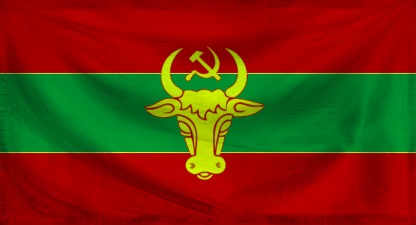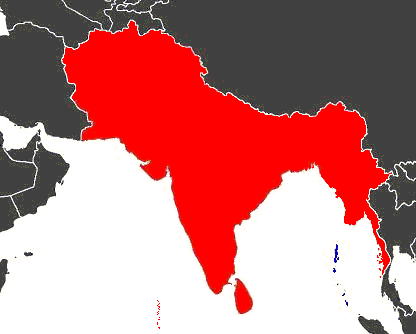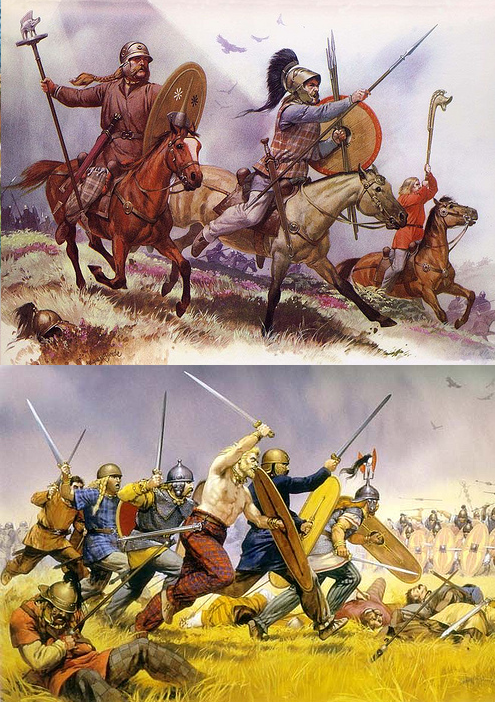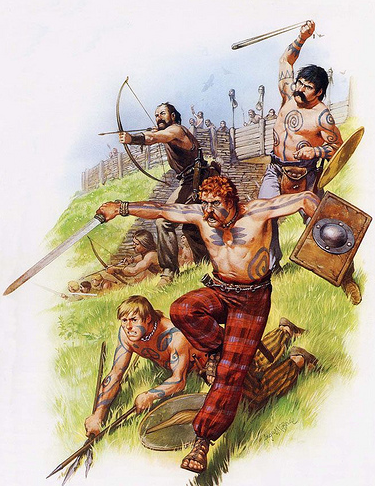Commonwealth of Socialist Republics (CSR)
Cymanwlad Gweriniaethau Sosialaidd (CGS/GGS)
Overview
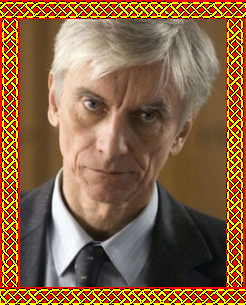
Comrade Graeme Igo, Grandfather of The Revolution

Chairman of Council of State of the Socialist Commonwealth, comrade Chivo; General Secretary of the Central Committee of the League of Communists, comrade Sopworth ApGraeme; Chairman of the Council of Ministers comrade Aparajita
The Commonwealth of Socialist Republics is a large nation located in South Asia. Perhaps better known by its Geletian Celtic name Beddgelert (often anglicised Beth Gellert as per approximate pronunciation) it is one of the world's largest and strongest Communist states. Though the nation is often colloquially referred to as Soviet India the Commonwealth is notable for the fact that its Communist ideology derives not wholly from Marxian roots but also from the teachings of Comrade Graeme of the Cornitouti Clan Igo.
Beddgelert has counted itself a Soviet Socialist Commonwealth since 1982, prior to which an exclusive Geletian Celtic government held sway over a right-wing apartheid state.
Amongst the most populace of countries, the Commonwealth maintains one of the world's most highly-rated education systems, one of the fastest-growing economies, and some of the largest armed forces. At the same time Beddgelert is also beset by problems of over-crowding, creeping climate disaster, chronic substance abuse, and pariah status on the world stage. These contrasts are mirrored in a population comprised of towering Gauls and relatively diminutive Indo-Aryans and Dravidians, a landscape including burning deserts and vast floodplains, and a popular struggle between Socialist internationalism and both Celtic and Indian nationalism.
Links
Profile Pages
*Geography
*History
*Demographics
*Economic Overview
*Culture: Religion and Mythology
Other Threads
Cymanwlad Gweriniaethau Sosialaidd (CGS/GGS)
Overview

Comrade Graeme Igo, Grandfather of The Revolution

Chairman of Council of State of the Socialist Commonwealth, comrade Chivo; General Secretary of the Central Committee of the League of Communists, comrade Sopworth ApGraeme; Chairman of the Council of Ministers comrade Aparajita
The Commonwealth of Socialist Republics is a large nation located in South Asia. Perhaps better known by its Geletian Celtic name Beddgelert (often anglicised Beth Gellert as per approximate pronunciation) it is one of the world's largest and strongest Communist states. Though the nation is often colloquially referred to as Soviet India the Commonwealth is notable for the fact that its Communist ideology derives not wholly from Marxian roots but also from the teachings of Comrade Graeme of the Cornitouti Clan Igo.
Beddgelert has counted itself a Soviet Socialist Commonwealth since 1982, prior to which an exclusive Geletian Celtic government held sway over a right-wing apartheid state.
Amongst the most populace of countries, the Commonwealth maintains one of the world's most highly-rated education systems, one of the fastest-growing economies, and some of the largest armed forces. At the same time Beddgelert is also beset by problems of over-crowding, creeping climate disaster, chronic substance abuse, and pariah status on the world stage. These contrasts are mirrored in a population comprised of towering Gauls and relatively diminutive Indo-Aryans and Dravidians, a landscape including burning deserts and vast floodplains, and a popular struggle between Socialist internationalism and both Celtic and Indian nationalism.
Links
Profile Pages
*Geography
*History
*Demographics
*Economic Overview
*Culture: Religion and Mythology
Other Threads

